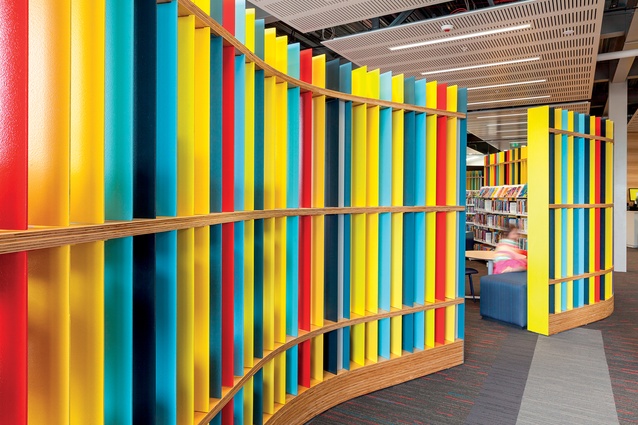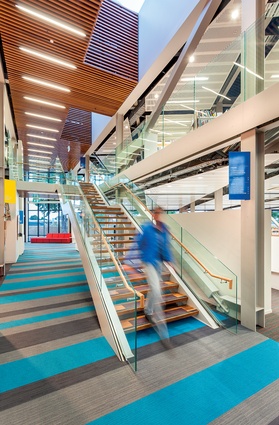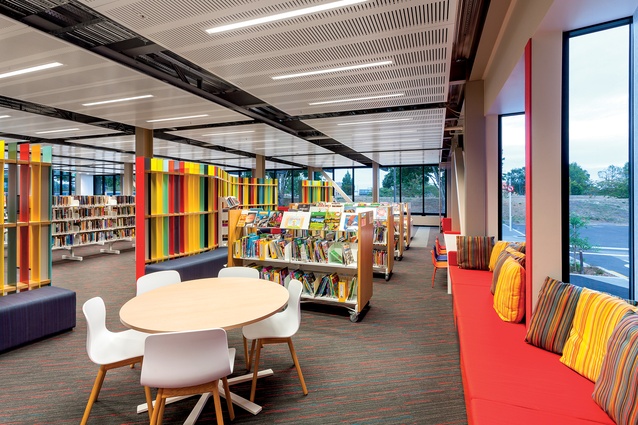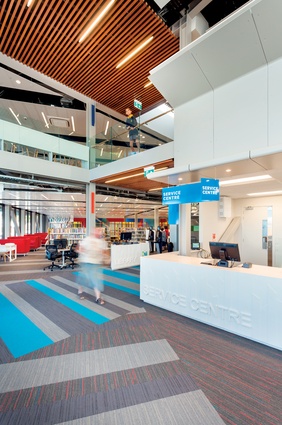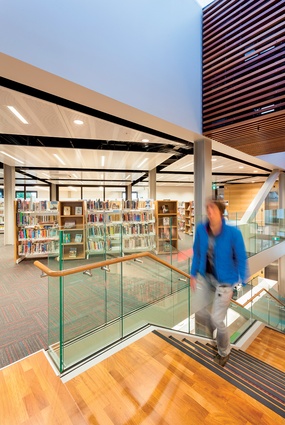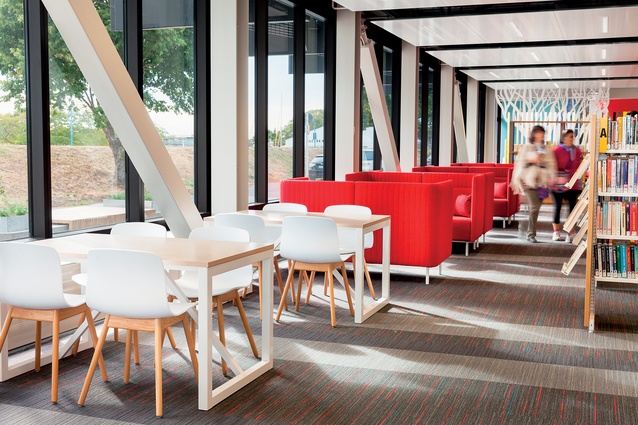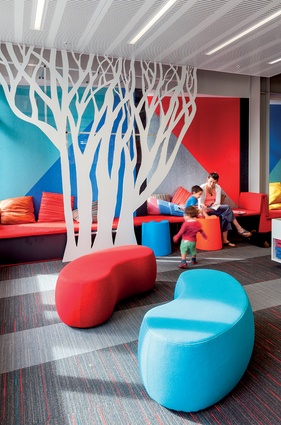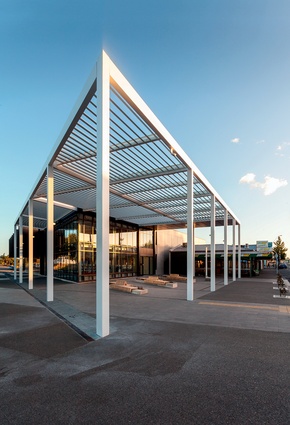Civic pride: Kaiapoi Library
Kaiapoi is a small town of around 10,000 people which sits next to a tributary to the Waimakariri, about 17 kilometres north of Christchurch. It was badly damaged in both the 2010 and the 2011 earthquakes, with large areas of housing and swathes of its central shopping streets demolished as a result.
It was, therefore, a significant event when the new building that houses a library, council service centre, museum, art space and community facilities opened in January this year. The opening of the Ruataniwha Kaiapoi Civic Centre represents an important moment in the town’s post-’quake recovery.
By joining a number of services and functions together, the designers and clients have created a civic building that provides a sense of grandeur and scale that the individual parts would not have managed. Warren and Mahoney states on its website that: “the design co-located a number of key civic facilities under one roof, creating a ‘living room’ and meeting point for the community in a single building.”
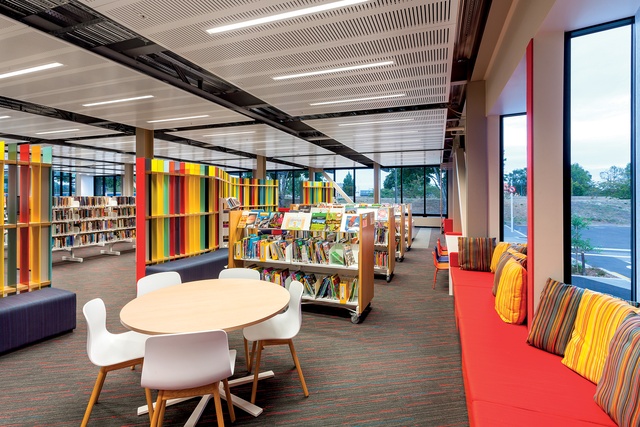
The planning of the building is straightforward and well handled. Two axes cross the building at right angles, drawing people together from the main public space on the north frontage, and from the car park on the west, to meet at the focal point of the building. A generous double-height space faces north and provides the sense of scale that makes the building feel civic, rather than community. This north-facing glazing works with the careful environmental design and enables a mixed ventilation system that reduces energy costs and provides opening windows with adequate heating.
The art space, museum and library spaces are differentiated clearly; while being cleverly devoid of screens or walls that would interfere with sight lines. This careful planning means the co-management of the building will be relatively easy while keeping the building coherent. The library, service centre and community meeting spaces are integrated and this enables some flexibility as the demands on the spaces shift with different needs. For example, a decently sized community meeting room, which overlooks the river, can be closed for meetings and, when not in use, opens up to give more space to the upstairs part of the library.
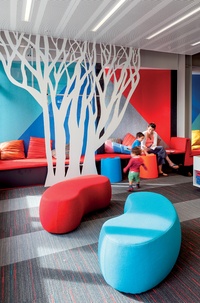
The library continues a kind of soft design philosophy of open-but-diverse spaces with clean planning knitting the area together while screens, seating and shelves provide a variety of uses. I was impressed particularly with the children’s area along the southern wall, which affords a number of kid-sized cushioned areas for reading. A staggered, sawtooth-shaped wall creates nooks for children behind the structural framing with private views to the river.
One of the main drivers of the design was to re-engage the town with the river that has dominated so much of its history. Craig Sargison from the Waimakariri City Council said “the building creates a superb meeting point for the community and also has the river as a focal point from inside the building.”
The name Kaiapoi reveals the town’s importance as a central location for the trade of food and other resources. It was, at one point, the home of the largest fortified pā in the South Island and, in the 20th century, a large company manufacturing woollen goods and a meatworks were located there. To achieve this reconnection, the designers argued successfully for the road between the centre and the river to be slowed and reconfigured to favour pedestrians. The large stopbank on the river restricts direct sight from the bottom floor of the centre but the second story is used to create views up and down its banks.
The exterior of the building continues the civic aesthetic, with an open public space sheltered by a large white frame and a black building that pulls back from the street. In contrast to these formal – and largely conservative – gestures the interior is welcomingly warm and generous. A diverse palette of materials and patterns is used as part of a conscious design strategy. The task was to unite the space without creating a strict aesthetic and, by doing so, future changes to the building could be made without the fear of ‘ruining’ the spaces.
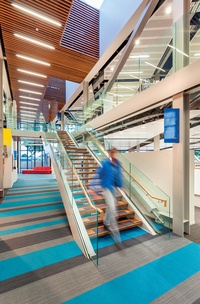
Kaiapoi has a great deal of usable building for the $14-million cost. Moving some of the back-end space that traditionally occupies a lot of libraries and museums and placing those functions in the public parts of the building achieve some of this. The museum (unfinished at the time of visiting) looks delightfully stacked with a myriad of objects and ideas. Exhibition specialist Rick Pearson has been brought on board to work with the museum team on this space and it looks like an exciting addition and a playful contrast to the rest of the building.
The art space sits in a small but generously proportioned wedge, which opens to one of the axes and between the main service area and the museum. This provides wall and floor space away from direct sunlight for exhibitions and artworks. This simple but well-configured area characterises the simple and effective planning in this building.
Clients have praised the main designers from Warren and Mahoney for the way they engaged with the staff. Sargison: “they took on board the user requirements and worked closely with staff to ensure that all the aspirations of the building brief were fully realised.” Encouragingly, post occupancy reviews have been carried out to measure the performance of the building after completion.
The Waimakariri council says it is delighted with the building and are receiving a steady stream of positive comments from users and that the “building is regarded with a sense of pride of ownership by the community”. This is, perhaps, the most important praise that a civic building can receive.

